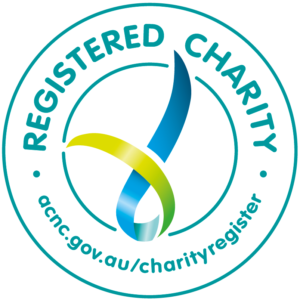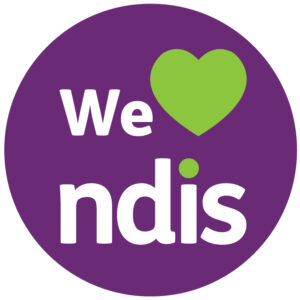In Part 2 of our Tech Talk series, find out how you can help teens protect their privacy and stay safe on social media. While our series focuses on teenagers, the general safety principles in this article apply to children as well.
Social media platforms, such as Instagram, Facebook, Snapchat and TikTok, offer a place for teenagers to express themselves, connect with friends and community, and seek acceptance and belonging. Social media transcends geographic boundaries and can help teenagers find an inclusive and diverse community.
The dark side of social media
While this connectivity can provide much-needed support, there is a dark side. Social media sites can be a source of negativity, hostility, misinformation and cyberbullying, which may lead to distress, fear or even self-harm.
Cyberbullying (or “dissing”) involves using technology to bully or harass another person. It includes sending, posting, or sharing negative, harmful, false, or mean content about someone else. Spreading rumours, sharing personal or private information about someone else to cause embarrassment or humiliation, or pretending to be someone else online with the aim of hurting them are also forms of cyberbullying. In Australia, 10 to 20% of children and young people have been cyberbullied (Joint Select Committee on Cyber-Safety, 2011).
Unlike traditional bullying, the cyberbully can hide behind the computer screen. This makes them bolder and sometimes unaware of the pain they have inflicted on the target. When it goes viral, cyberbullying can have a more lasting impact because the bullying is repeated, shared and nearly impossible to erase.
Social media sites also leave teenagers vulnerable to scammers. According to the Australian Competition and Consumer Commission (ACCC), Australians under 25 lost over $5 million to scams in 2019. Facebook and Instagram were the most common platforms for reports and losses for this age group. Typical scams on these platforms involved fake online stores or the sale of fake tickets to events.
How to protect teens on social media
There are several practical and straightforward steps you can take to protect everyone in your household on social media.
- Choose the highest privacy settings. Ensure settings allow you to choose who follows you, who sees your posts and who views the photos and videos you share. If you only want a select group of friends or followers to see something, use any controls available to choose who sees your post (e.g. direct or close friends on Instagram).
- Take a break. If you need a break from someone, you follow, you can temporarily “snooze” or “mute” a person, a page or a group. Check out other time management tools that give you time out without shutting down your entire profile.
- Practise self-care. If someone is making you feel really bad, you can “unfollow”, “unfriend” or “block” them without them knowing. When you “unfriend” someone you can still view their profile posts. Blocking completely blocks everything between you and the blocked person and they will no longer be able to view your posts or search for your account.
- Control comments and posts. Facebook and Instagram have comment controls that allow you to choose who comments on your posts or what kinds of posts you want to see on your newsfeed. On some social media platforms, you can enter which words, phrases and emojis you find offensive. Any comments containing them will also be hidden from you without notifying the person who sent them.
- Be suspicious. Never meet someone in real life if you have only chatted to or communicated with them via social media, including dating sites. That person could be a predator with a fake profile. Never click on a link in a social media post as many of these links are not legitimate. Always try to buy tickets to events from authorised sellers either in person or through genuine websites and never buy from sites that ask for unusual payment methods such as bitcoin or iTunes cards.
What to do if you get caught out
Don’t fall into the trap of thinking that children growing up in the digital age are automatically tech-savvy. Predators and scammers are becoming ever more sophisticated in their approaches, so it’s vitally important to learn about social media platforms and stay informed about scams and security weaknesses in social media platforms.
No matter how careful you are, it’s possible to be conned by a scammer, find yourself on the receiving end of unwanted communications, or discover photos have been widely shared without your permission. It’s important to report suspicious or offensive posts, photos, profiles and comments on social media platforms by clicking on “Report” and following the instructions.
Taking a screenshot of the bullying message or images can be useful evidence, especially if the bully changes their story down the track. If you think a scammer has gained access to personal identifying information, contact your financial institution as soon as possible.
Always take cyberbullying seriously. Teenagers need to know you care and want to help them if they are a victim of cyberbullying or a scam. Rather than forbidding the technology, encourage teenagers to come to you if they are worried about something online so that you can take the appropriate action to keep them safe. If they are afraid, you will take away their technology as punishment, they are likely to be reticent to talk to you.
Reassure your teenager that cyberbullying or falling for a scam is not their fault. Rather, online bullies and scammers are lashing out to be mean or to take advantage of young people. If you are worried about an experience your teenager has had online, talk to your Challenge Community Services caseworker or contact one of the organisations listed below.

The Office of Children’s eSafety Commissioner
esafety.gov.au
Office of the e-Safety Commissioner
For any online safety concerns go to www.esafety.gov.au
Phone 1800 880 176 or email enquiries@esafety.gov.au
Australian Competition and Consumer Commission (ACCC)
To keep up to date with the latest scams, receive scam alerts or to report a scam go to:
https://www.accc.gov.au/site-search/Scamwatch















